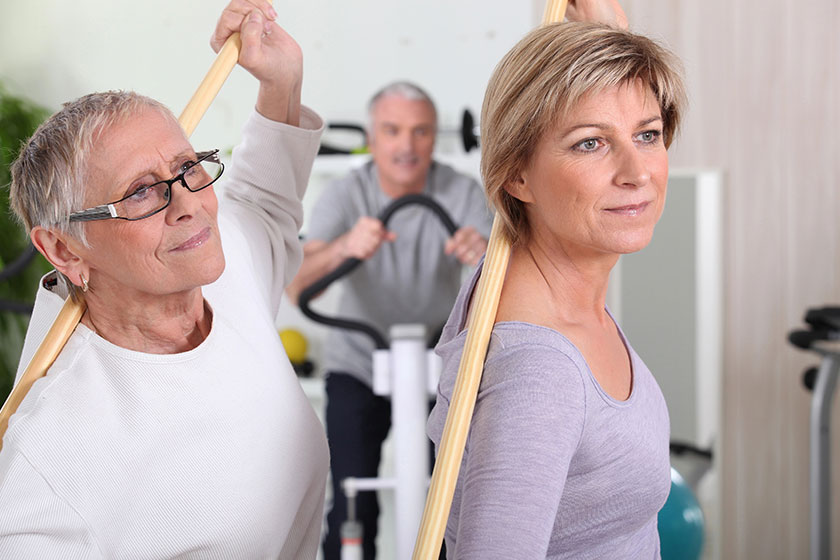Mobility is a crucial aspect of independence and quality of life, especially for individuals living in a memory care community. The ability to move freely and safely not only impacts physical health but also plays a significant role in cognitive well-being. This article explores various ways a memory care community within a retirement setting can enhance and improve the mobility of its residents.
Tailored Physical Therapy Programs
One of the primary ways a memory care community enhances residents’ mobility is through tailored physical therapy programs. These programs are designed to meet the unique needs of each resident, focusing on strength, balance, and coordination. Physical therapists work closely with residents, employing exercises that are both safe and effective, thus improving their ability to move and perform daily activities with more ease and less risk of falls.
Encouraging Regular Physical Activity
Regular physical activity is vital for maintaining and improving mobility. Memory care communities often have structured schedules that include various forms of exercise, such as walking groups, gentle yoga, or chair exercises. These activities are not only enjoyable but also crucial for keeping residents physically active, which is essential for maintaining muscle strength and joint flexibility.
Safe and Accessible Environment
The design of a memory care community plays a significant role in promoting mobility. These communities are typically designed with safety and accessibility in mind, featuring wide, well-lit hallways, handrails, and minimal obstacles. This environment enables residents to move around more freely and safely, reducing the risk of accidents and promoting independence in mobility.
Utilization of Assistive Devices
In a memory care community, the appropriate use of assistive devices such as walkers, canes, and wheelchairs is encouraged to aid mobility. These devices are tailored to the individual’s needs, ensuring they provide the right amount of support and stability. The proper use of these aids can significantly enhance a resident’s ability to move independently and safely within the community.
Cognitive Stimulation Activities
Cognitive stimulation is an integral part of a memory care program, and it indirectly benefits mobility. Activities that engage the mind, such as puzzles, games, and music therapy, can improve cognitive function, which in turn supports motor skills and coordination. A sharp and engaged mind is better equipped to control and coordinate movement, thus enhancing overall mobility.
Nutritional Support
Nutrition plays a critical role in maintaining physical health, including mobility. Memory care communities provide well-balanced meals that cater to the nutritional needs of the residents. Proper nutrition helps in maintaining muscle mass, bone density, and overall energy levels, all of which are essential for good mobility.
Rehabilitation Services
For residents who have experienced injuries or have conditions that affect their mobility, memory care communities often offer rehabilitation services. These services include specialized therapies such as occupational therapy and speech therapy, which not only focus on recovery but also aim to improve and maintain the resident’s mobility.
Social Engagement and Movement
Social engagement in activities that involve movement can greatly benefit the residents of a memory care community. Group activities, such as dancing or light sports, encourage movement in a fun and social setting. This not only improves physical mobility but also enhances social skills and emotional well-being.
Continuous Monitoring and Adaptation
Continuous monitoring and adaptation of care plans are essential in a memory care community. As the residents’ needs and abilities change, the approaches to enhancing their mobility must also evolve. This ongoing assessment ensures that each resident receives the care and support needed to maintain and improve their mobility.
Specialized Exercise Programs for Cognitive Health
Specialized exercise programs that focus on both physical and cognitive health are an essential component in a memory care community. Activities like tai chi, balance exercises, and coordination drills are tailored to enhance both cognitive function and physical mobility. These exercises help in improving spatial awareness, coordination, and motor skills, all of which are crucial for safe and independent movement. Integrating cognitive elements into physical activities ensures a holistic approach to improving mobility in the memory care setting.
Engagement in Outdoor Activities Supported by Community Amenities
Memory care communities recognize the immense benefits of natural settings on both physical and mental well-being, which is why outdoor activities are a key component of their programs. Utilizing the retirement community amenities, these centers provide access to safe and secure outdoor spaces. These amenities cater to the needs of residents requiring memory care, including therapeutic gardens, safe walking paths, and accessible outdoor exercise areas. Engaging in activities like walking, gardening, or gentle outdoor exercises in these specially designed areas not only promotes physical movement but also provides sensory stimulation, crucial for cognitive health and overall mobility.
A memory care community within a retirement setting plays a pivotal role in enhancing and maintaining the mobility of its residents. Through tailored physical therapy, regular physical activity, a safe environment, the use of assistive devices, cognitive stimulation, nutritional support, rehabilitation services, social engagement, and continuous monitoring, these communities provide comprehensive support. This multifaceted approach ensures that residents not only maintain their mobility but also enjoy a higher quality of life with greater independence and well-being.

